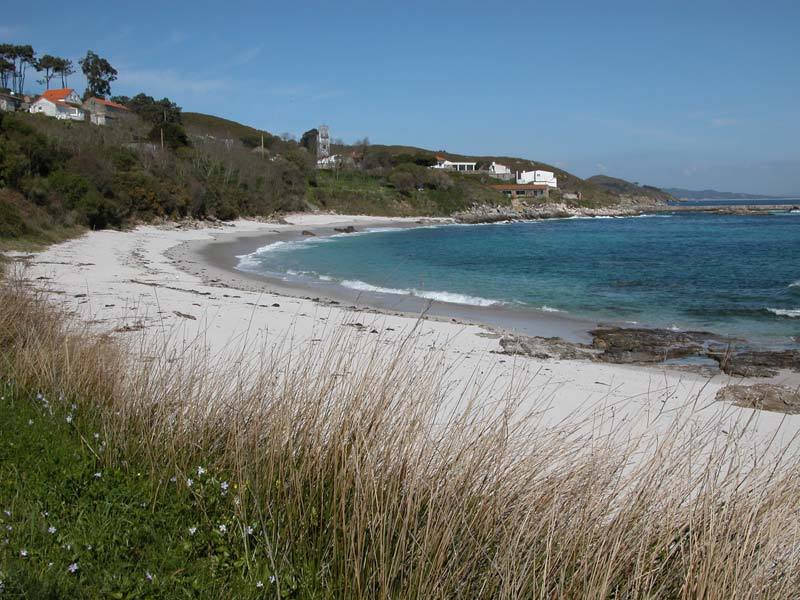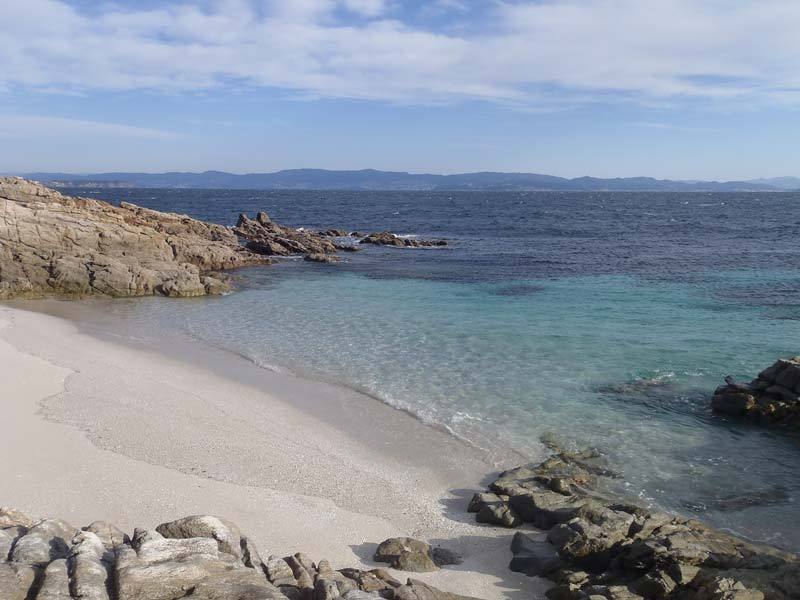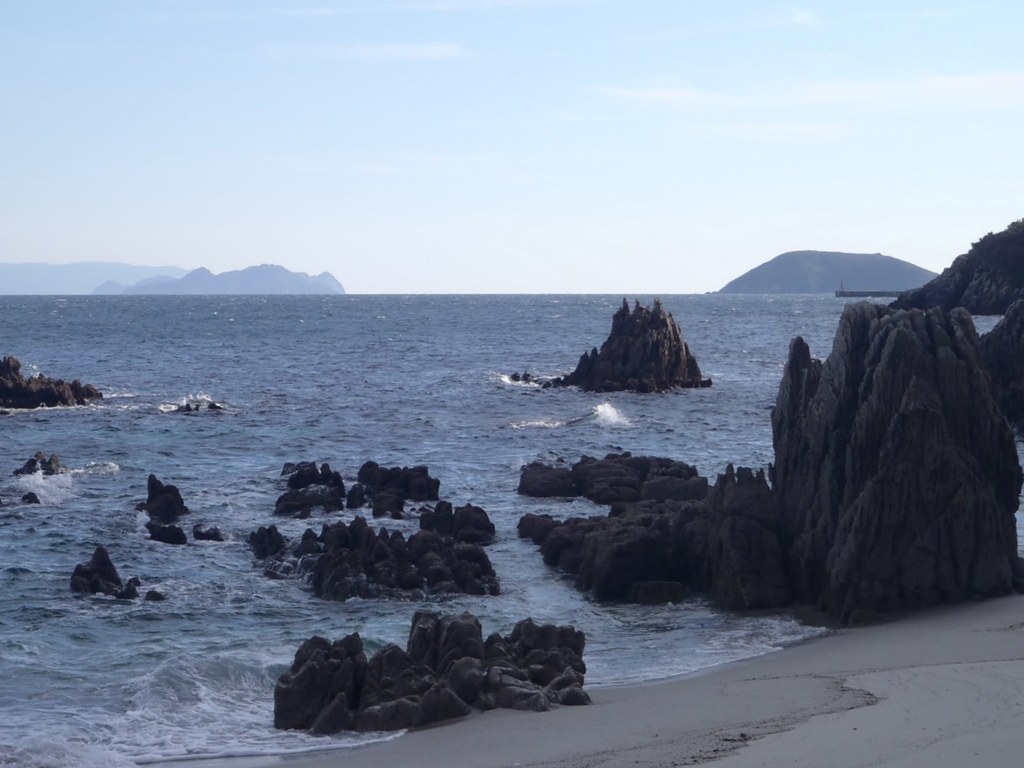Beaches like Melide are deposit areas and places where there´s sand accumulation and gravel shaped by the action of waves and tides where coastal marine flows and waves lose strength coasts protected the winds. So as the sea is slower, it reduces its capacity to drag sediments, producing the appearance of pieces of quartz, felspar and shells on the beaches.
If we get closer to these sandy sediments with a magnifying glass (or even just paying a lot of attention) we could see that they are small pieces of quartz mixed with grains of carbonate coming from remains of marine organisms.
Beaches and dunes, morphologically and evolutionarily depend on the energy of the place, level of exposure, flows, swell and available sediment. They are areas sheltered from the swell where accumulative processes happen, making different sedimentary systems for example dune systems and beaches which are in the east western part of the islands if we look at the inside of the inlet.
The sea-dune system is a morphological unstable ecosystem with constant changes and dynamics influenced by winds, flows and waves. It´s quite fragile and there are actions modifying the coastal dynamics.
This sandy area is a dune system which is being recovered, fenced in order to avoid the deterioration which was originated by the tracks and the erosion of the visitors which came in Iarge numbers especially in the summer. Apart from Melide we have sandy areas like Dornas, Area dos Cans, Canexol and Pereiró in Ons.


